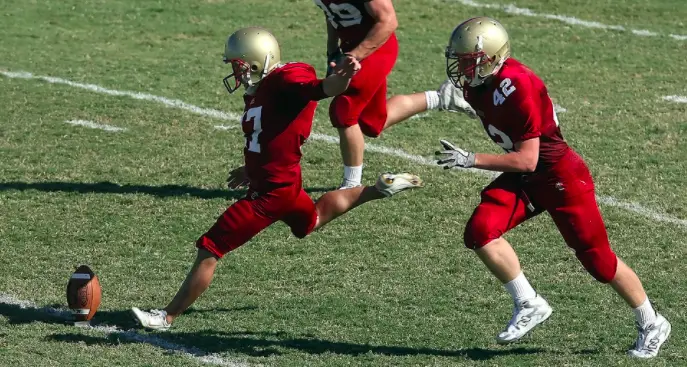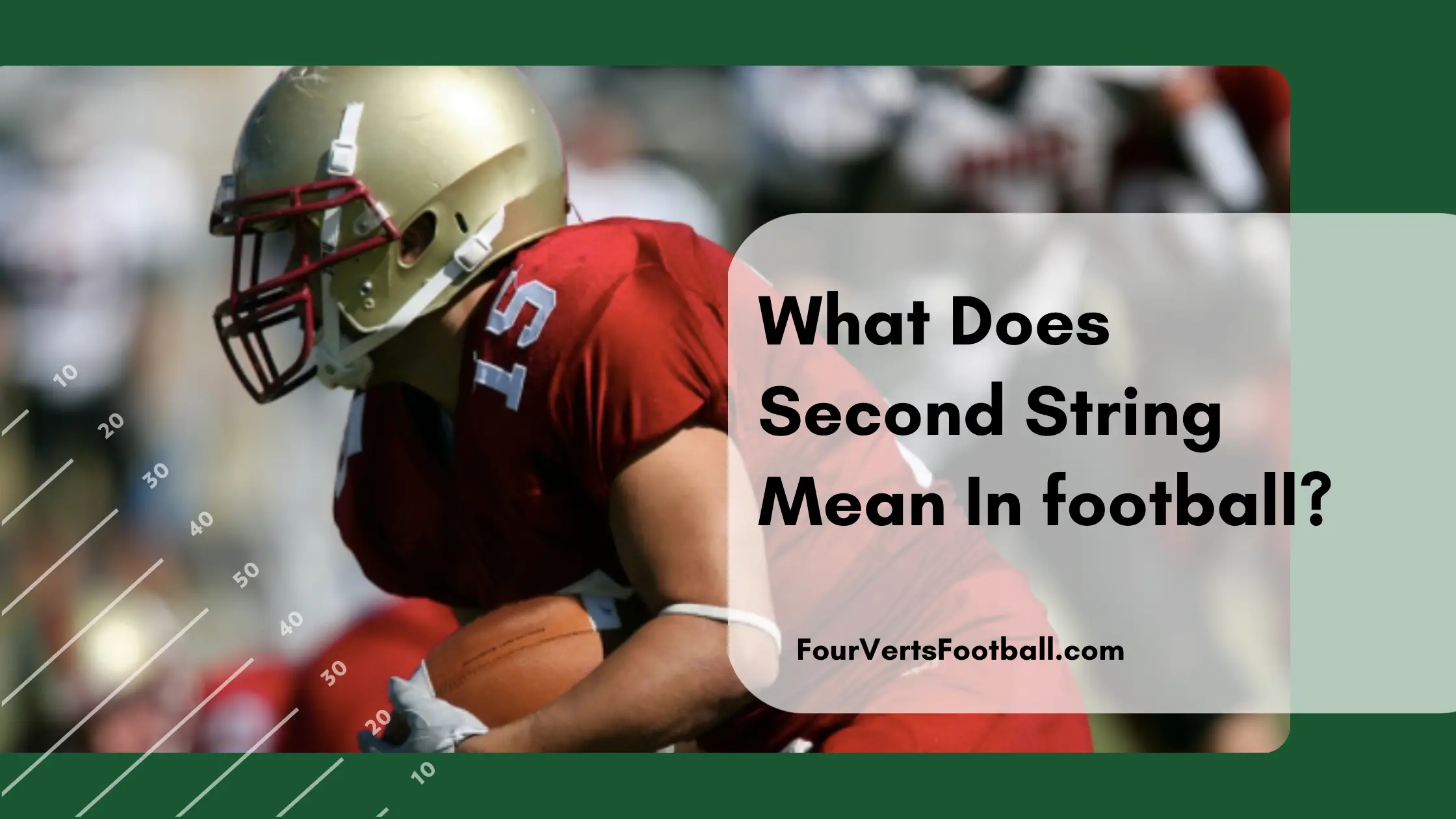Second string in football means that you are the backup to the number one player at the position. This term is used for every level of player on the roster. Meaning first string players are the starters, second strings are the backups, third strings are the third ranked player at the position and so on.
So if you are wondering what third string means or what fourth string means it simply means you are the third or fourth ranked player on your team at your position.
Where Does The Term Second String Come From?
The term second string is believed to come from medieval times in which archers would carry a second string with them into battle. If their first string on the bow were to snap in battle then the archers would be able to use their second string as a backup.
In these times the term was only used literally. It wasn’t until the 1800’s that this term became an idiom. And was used to describe people as second stringers instead of just using the term literally.
Does Being A Second Stringer Mean You Will Not Play?
No, in fact, some second stringers are going to end up playing more than first stringers players depending on their position.
First off, some positions have multiple players on the field at one time. For example, in most situations, you will have two or three receivers on the field. But in some situations, you will have four.
The fourth receiver which is a starter when four receivers are on the field is not considered a first-string player. This player may be considered a second-string and even a third-string. Depending on how many receivers the team typically players with.
Special Teams
Special teams is a part of the game where second and third stringers get a ton of playing time. If you are a second-string player looking to get more playing time then special teams are a great opportunity.
Whether it is punts, field goals, or kickoffs special teams can offer you a chance to get out on the field more often.
This is especially true if you practice on honing your special teams skills. In fact many NFL teams have players brought on the team mainly for their special teams skills. These players are typically the third-stringers at their position but their playing time comes from special teams instead.
Injury
At the end of the day every football team has second-stringers and third stringers for a reason. Injuries are very common in football and the odds that a player in front of you will get injured at some point in the season is fairly high.
It is for this reason the second string quarterbacks are fully prepared to play against the upcoming opponent each week. This is another reason why you shouldn’t fret too much if you are named a second-stringer. Remember almost every football player was a second-stringer at some point in their career.
Formations
Another factor that plays into second-string playing time is personnel groupings. Some formations are going to feature multiple players at a single positioning meaning the second or third player at the position may find himself on the field.
For example, a second-string tight end may find himself on the field often during running plays. Teams may elect to put two tight ends on the field in order to improve their blocking on the play.
Formations that utilize certain skill positions can have a huge effect on how often second-string players get on the field.
This is also true for defensive formations. For example, if a defense was facing a pass-heavy team they may elect to bring a dime back onto the field. A dime back refers to the sixth defensive back on the field.
This means this player is a second or even third-string player, yet is able to play in that formation due to the personnel.
What Are Third And Fourth Stringers?
Now that you know what second stringers are in football you may be wondering what exactly third string and fourth string players are.
These players are the third and fourth in line when it comes to a starting position in football. Most positions in football will have a third-string player but some will only have a first and a second.
Fourth string players are usually used in positions in which multiple players are starters such as a wide receiver or cornerback.
When you get to this level of depth on the roster these players are rarely brought in just for their offensive or defensive positions.
These players are typically brought in to do a specific job on special teams. Let’s take a wide receiver for example.
A fourth-string wide receiver is going to be officially listed as a wide receiver on the depth chart. But if this player is not getting snaps as a receiver you can expect that he is being used in special teams.

Wide receivers are often used as kickoff and punt return players. If a player is talented enough he can stay on an NFL roster with return kicks being his only role.
If several injuries happen this player may have to step up from third or fourth string into a higher role.
Additionally, a wide receiver is a position that is often selected to be a gunner on special teams. Due to the high top-end speed of receivers, they are very useful on special teams.
Many receivers earn their keep early in their career by playing special teams positions like gunner or punt returner.
That is all on the second and third strings in football learn about the next man up mentality to see why backup players must be ready to go.

